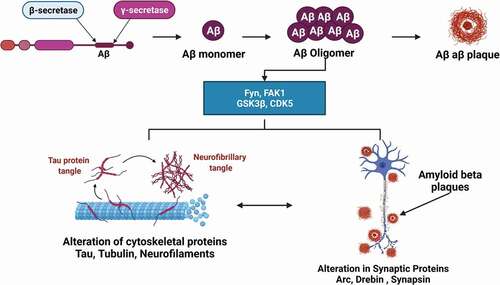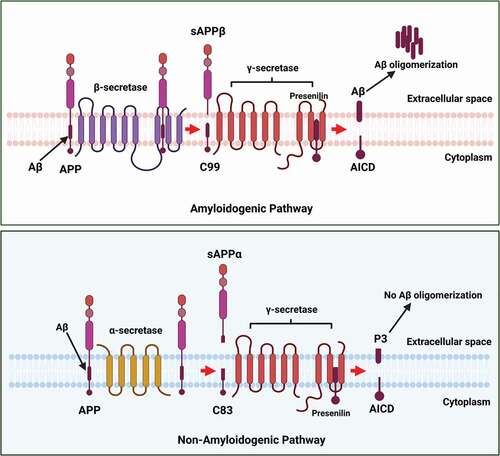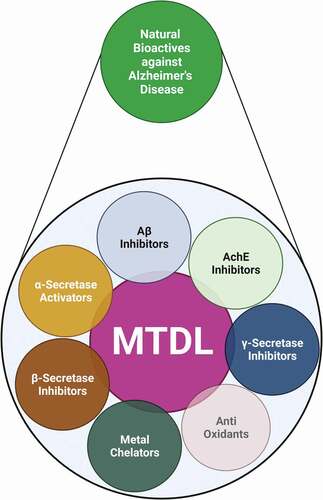Figures & data
Figure 1. Formation of neurofibrillary tangles (NFTs) and senile plaques. The senile plaques contain amyloid beta (Aβ) peptide, which consists of 37–49 amino acid residues and are formed by the extracellular and transmembrane domains of amyloid precursor protein (APP). Oligomers may be the hazardous Aβ species that contribute to signaling pathway deregulation (Fyn, FAK, GSK3b, and CDK5), causing changes in cytoskeletal and synaptic proteins, as well as synaptic and neural damage.

Table 1. Plants with potential AChE inhibitory activity
Table 2. Isolated compounds from plants with potential AChE inhibitory activity
Figure 2. β- and γ-secretases are involved in the synthesis of Aβ. β-secretase cleaves the APP to form transmembrane C-99 fragment with the N-terminus of the Aβ peptide. This is followed by the action of γ-secretase, which cleaves C-99 fragment in the transmembrane domain to make the C-terminus of Aβ.

Table 3. Plants with inhibitory activity against Aβ
Table 4. Natural Compounds with inhibitory activity against Aβ
Table 5. Plant products with multiple targets against AD
Figure 3. The natural products can simultaneously act on multiple targets associated with AD (enhance α-secretase activity; decrease β- and γ- secretase activity; inhibit Aβ; prevent oxidative stress and inflammation).

